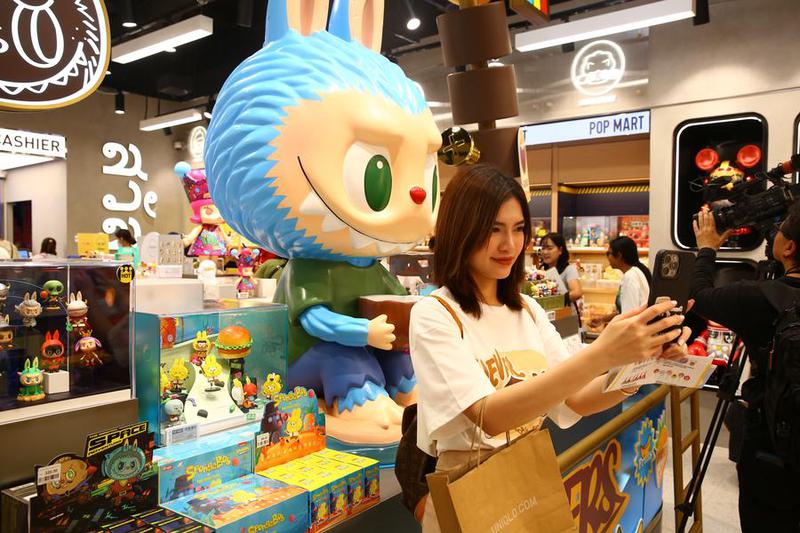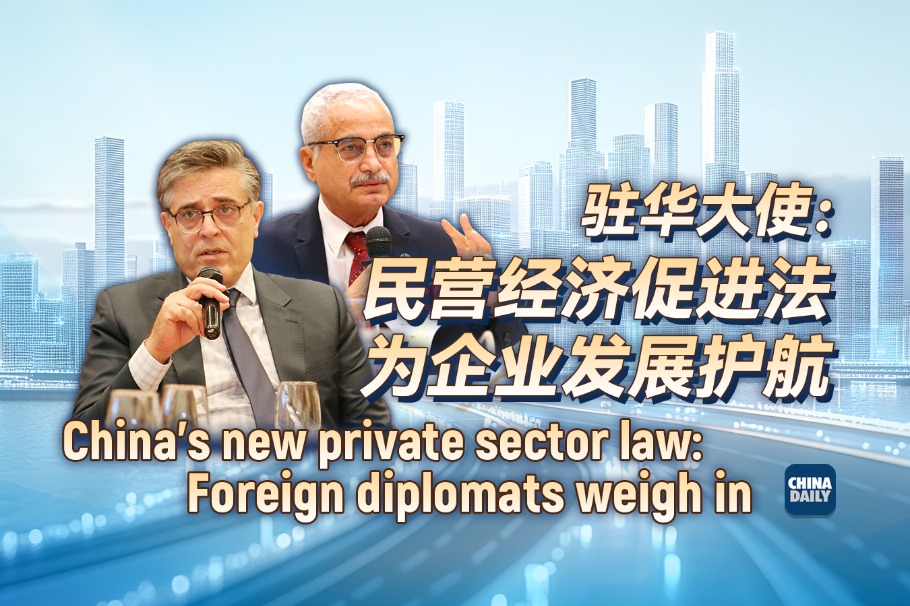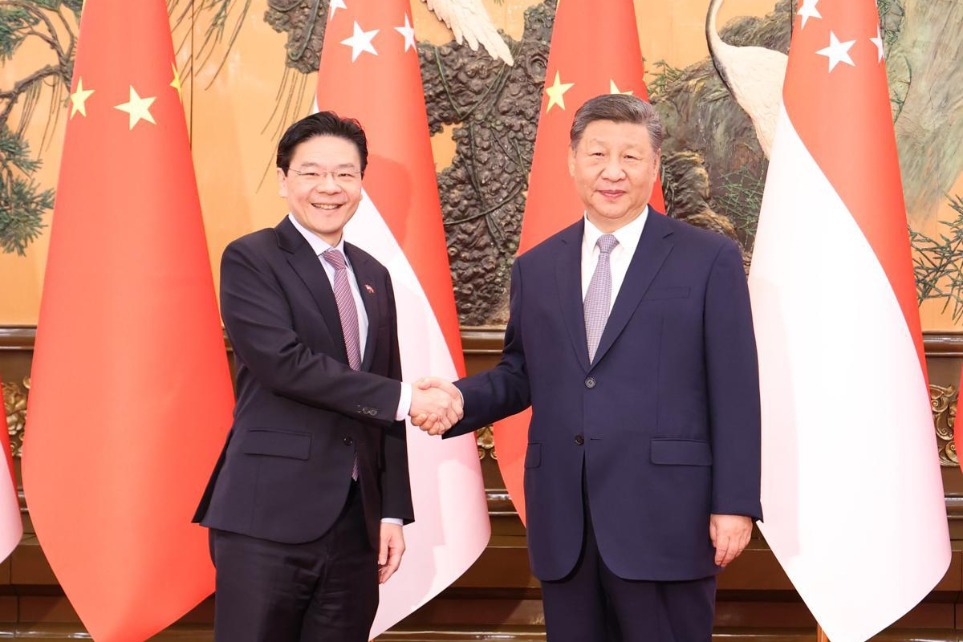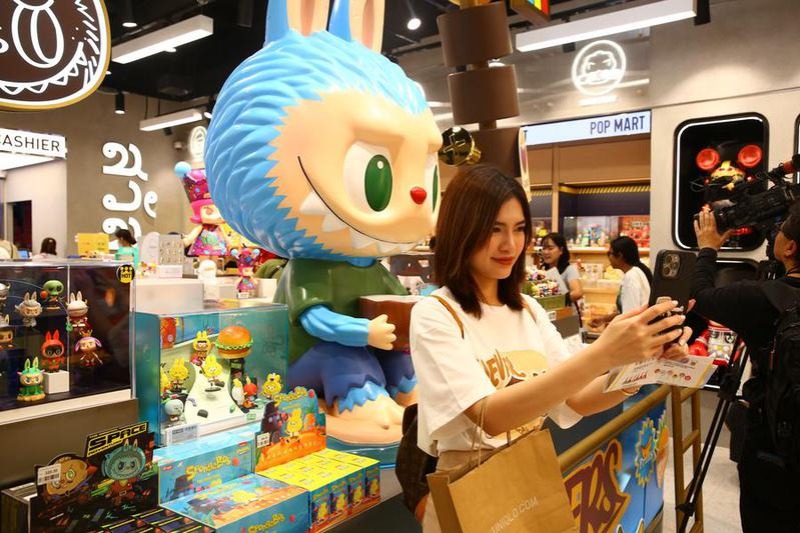Labubu, China's cool new culture ambassador


The global craze for Labubu, a Chinese toy, has reached unprecedented levels, with its sales figures skyrocketing and cultural appeal transcending borders.
But what is Labubu?
Labubu is a core intellectual property (IP) image known as 'Monster' from Pop Mart, a renowned global trendy toy company originating from China. This IP has become a cultural sensation, attracting consumers worldwide with its unique charm and design.
New darling of the global toy market
The Labubu family comprises over 100 members, each featuring two long ears and a row of sharp teeth when they smile. Challenging conventional beauty standards, Labubu has soared to fame on social media and become a highly sought-after treasure for collectors.
Whenever a new Pop Mart store opens or a new product series is released, long shopping queues form in front of the stores, turning corner after corner in cities like Los Angeles, London, Milan, Tokyo, Bangkok and many more.
While conducting a city walk through the boulevards in Shanghai, young people hang Labubu on their backpacks. Outside a New York shopping mall, people wait all night just to purchase the Chinese elf-like toy. The limited edition in Singapore, with a new compound name Merbubu (Merlion+Labubu), was sold out in one second after release. Labubu appears in almost every corner of Paris and Spanish people have even written the theme song exclusively for Labubu.
Chinese Disneyland? World-class wonderland!
Pop Mart kicked off its global business in 2018. In September 2020, its first overseas store opened in Seoul, ROK. By the end of 2024, the company had launched over 500 stores in more than 30 countries and regions around the world. Through multiple cross-border e-commerce platforms, consumers in over 90 countries and regions can purchase their Labubus online.
The recent news attracting market attention is about the newly unveiled and unique mint-colored Labubu at the Yongle 2025 Spring Auction. The hammer price of one item sold at auction in Beijing was 1.08 million yuan, equivalent to about 150,000 US dollars. This figure aligns with the broader trends in the art market, as evidenced by the continued interest in art auctions and the presence of new buyers, particularly in Asia, as discussed in recent market reports.
Pop Mart has been quite successful in its global development. Based on rapid growth in the Southeast Asian market characterized by similar culture, the European and American markets have also set impressive records. In April, the Pop Mart App was once the top-downloaded shopping app in the United States. It is estimated that Pop Mart's revenue in the North American market will reach about 2.5 billion US dollars in 2025.
The founder of Pop Mart, Wang Ning, once stated his aspiration to create a Chinese Disneyland. Since then, he has shifted his focus to establishing a world-class Pop Mart wonderland.
To light up passion and bring joy
What fuels Labubu's success is a vast industrial innovation network intricately woven through various regions of China. “Based on Chinese manufacturing and production, using the Chinese market to incubate artists, and then gaining influence around the world - this kind of platform is difficult for other countries to copy,” said Wang Ning.
Chinese manufacturing + smart manufacturing
Behind the soaring Labubu craze is an industrial upgrade that has been carried out quietly.
As the largest toy export base in China, Dongguan has amassed over 4,000 toy companies and nearly 1,500 supporting SMEs, making it a significant hub for the global toy industry. Once serving as OEMs for toy giants like Lego and Mattel, these companies have now evolved to contribute over 70% of the total production capacity required by Pop Mart.
Thanks to China's manufacturing capabilities, the time from design to market for a new product is greatly reduced. AI technologies are used to analyze the sales data of stores in real time, providing timely feedback and adjusting production plans. Such smart manufacturing significantly enhances the global competitiveness and brand management of Chinese intellectual property.
Art empowerment + cultural meaning
The name Labubu has no specific meaning, only referring to a fictional elf character. Its creator is Mr. Kasing Lung, a Hong Kong artist. Hong Kong has been one of the regular and significant venues for the prestigious Basel International Art Fair (BIAF), which has been showcasing modern and contemporary art since its establishment in 1970.
On this prestigious design exchange platform, Wang Ning signed a collaboration agreement with the designer of Labubu. This innovation model has driven China's trendy toys to complete the leap from OEM to value-added creation.
Global consumption + brand expansion
Recently, international e-commerce is entering a period of unprecedented growth and prosperity. Increasingly, Chinese local brands are venturing into international markets, bolstering their global popularity and influence. AliExpress, the renowned multinational e-commerce platform, has invited numerous internet celebrities from around the globe to participate in Labubu live-selling events held in Beijing's charming Pop Mart Park.
Labubu's popularity is inseparable from the influence of celebrities. Lisa, a key member of the Korean pop group Blackpink, has been instrumental in boosting the popularity of Labubu, as evidenced by her social media post featuring the Labubu blind box. Her fans in Thailand, Vietnam, and Singapore were immediately attracted and rushed to Pop Mart stores.
Rihanna was photographed at the airport, with a pink Labubu pendant on her Birkin bag. Beckham also posted a photo of a Labubu gift from his youngest daughter. Thai Princess Sirivannavari Nariratana hung a cute Labubu on her bag at Paris Fashion Week. It was then people once again understood why Labubu was awarded the honorary title of Amazing Thailand Experience Explorer.
Cool China and its cool power
"Cool" has become the buzzword used by some foreign media and scholars to describe today's China. The Labubu craze aptly embodies this dynamic Cool Power.
What is the cool power? It is the growing appreciation of Chinese local brands and cultural products among young people around the world. It represents the pursuit of beautiful things and the yearning for a better life beyond national boundaries.
The overseas influence of Chinese cultural products has been increasing in recent years. Pop Mart is not the only example. Chinese TV series are gaining popularity globally. An increasing number of foreign friends are visiting China, thereby gaining a deeper understanding of the country.
When asked by the media how to view the overseas popularity of Chinese trendy toys, Mr. Lin Jian, Spokesman of the Chinese Foreign Ministry, commented as follows: China will share more opportunities and dividends with the world through greater openness, broader innovation and further cooperation. Therefore, people from around the world will enjoy exploring the Cool China.
Yes, China is cool for its development, innovation, culture and responsibility. China will continue to embrace the world with an open attitude, innovative vitality and cultural confidence. The image of a Cool China will be more deeply rooted in the Chinese path of modernization and the hearts of the people.
The author is PhD in International Relations & Columnist of World Affairs.
The views don't necessarily reflect those of China Daily.
If you have a specific expertise, or would like to share your thought about our stories, then send us your writings at opinion@chinadaily.com.cn, and comment@chinadaily.com.cn.






























